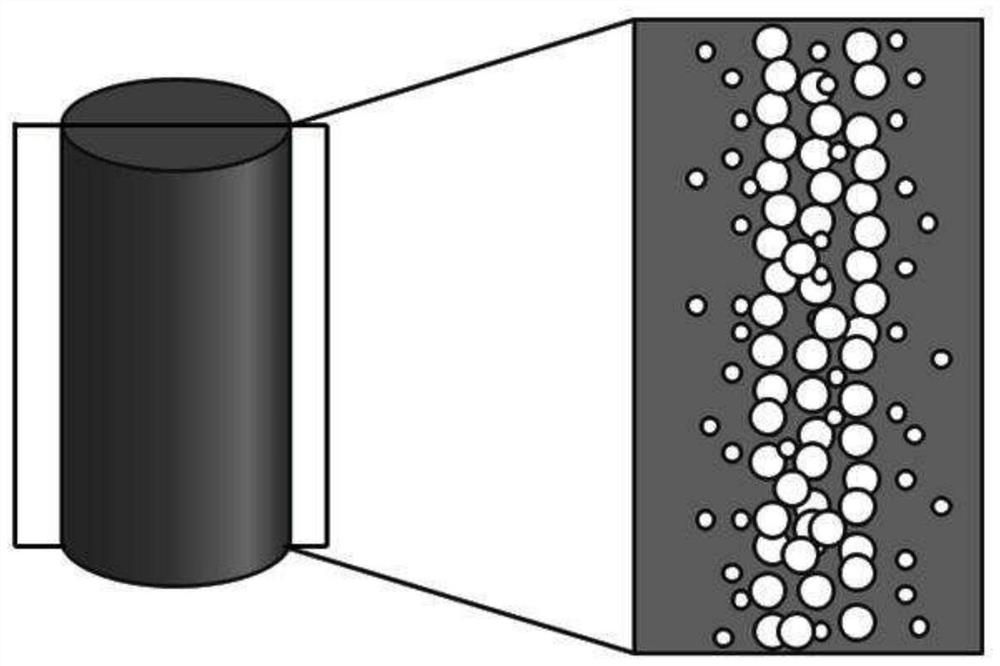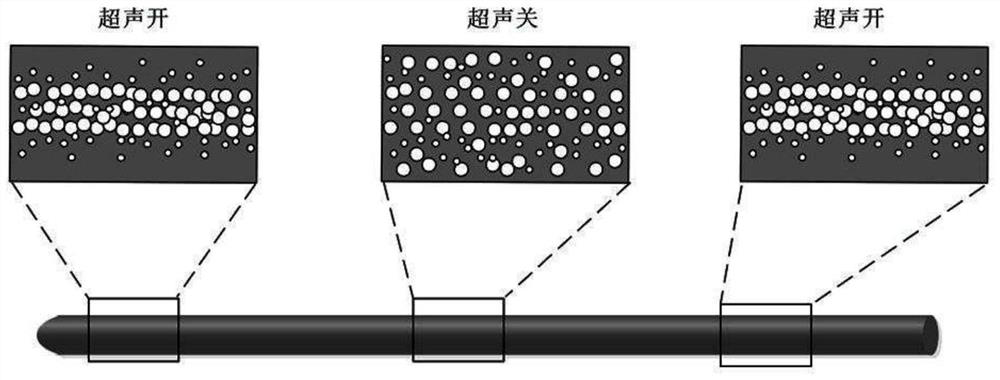3D printing system and method for ordered gradient porous material
A 3D printing, gradient porous technology, applied in the field of additive manufacturing, can solve problems such as the inability to meet preparation requirements, achieve rich adjustability, achieve gradient distribution, and adapt to a wide range of effects
- Summary
- Abstract
- Description
- Claims
- Application Information
AI Technical Summary
Problems solved by technology
Method used
Image
Examples
no. 1 example 1
[0114] A more preferred first embodiment related to the method of the present application is as follows:
[0115] Matrix material preparation: mix 65vol% powdered calcium phosphate bone cement with 35vol% NaH 2 PO 4 the solution
[0116] (0.3ml / g) mixed evenly; reinforcement phase particles: mix the same amount of three specifications of polymethyl methacrylate microspheres (PMMA, 15μm / 100μm) evenly; add the sacrificial template particles into the matrix material three times and mix After uniformity, set aside;
[0117] Based on the predefined geometric model of the gradient ordered reinforcement material and the ordered gradient distribution mode of the internal reinforcement particles, the relevant three-dimensional model is established, and then the three-dimensional model is discretized;
[0118] Based on the gradient ordered distribution pattern of reinforced particles in the predefined material model, determine the motion code of the three-dimensional motion component...
no. 2 example 1
[0122] A more preferred second embodiment of the method related to the present application is as follows:
[0123] Matrix material preparation: mix 50vol% powdered calcium phosphate bone cement with 50vol% NaH 2 PO 4 The solution (0.5ml / g) is mixed evenly; Reinforcement phase particles: select rod-shaped sodium glutamate crystal particles of two specifications as pore-forming agents (the aspect ratio is 25, and the diameter is 5 μm / 10 μm); the rod-shaped glutamate The sodium crystal particles are added into the matrix material three times and mixed evenly, then set aside;
[0124] Based on the predefined geometric model of the gradient ordered reinforcement material and the ordered gradient distribution mode of the internal reinforcement particles, the relevant three-dimensional model is established, and then the three-dimensional model is discretized;
[0125] Based on the gradient ordered distribution pattern of reinforced particles in the predefined material model, determ...
PUM
| Property | Measurement | Unit |
|---|---|---|
| particle diameter | aaaaa | aaaaa |
| diameter | aaaaa | aaaaa |
| aspect ratio | aaaaa | aaaaa |
Abstract
Description
Claims
Application Information
 Login to View More
Login to View More - R&D
- Intellectual Property
- Life Sciences
- Materials
- Tech Scout
- Unparalleled Data Quality
- Higher Quality Content
- 60% Fewer Hallucinations
Browse by: Latest US Patents, China's latest patents, Technical Efficacy Thesaurus, Application Domain, Technology Topic, Popular Technical Reports.
© 2025 PatSnap. All rights reserved.Legal|Privacy policy|Modern Slavery Act Transparency Statement|Sitemap|About US| Contact US: help@patsnap.com



